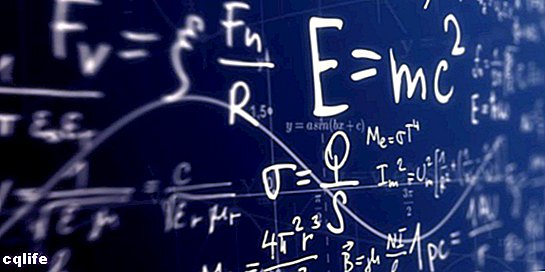We explain what physics is and the four basic domains it is divided into. Also, their interests and different branches of study.

What is Physics?
Physics, from the Greek physis ("Nature"), is the natural Science that studies, through fundamental laws, the Energy, the matter, the weather and the space, that is to say, the universe itself.
Physics is one of the most academic disciplines ancient, whose roots go back to the beginning of civilization, when man began to try to understand the forces that ruled the world around him.
It is a discipline both theoretical (describes the laws of the universe) and experimental (puts into practice hypothesis regarding said laws), and adheres to the verification and legitimation model promoted by the scientific method. It is one of the Sciences fundamental or central principles that exist, and within their field of study chemistry, biology and the electronics, among other.
Initially, physics was part, like so many other sciences, of the philosophy or the natural philosophy of antiquity, but from the Scientific revolution The seventeenth century emerged as an independent field, interested in the fundamental laws of reality and using the formal language of the math to express them. At present, however, physics is one of the disciplines that contributes the most to the change in the scientific, industrial and technological paradigm.
Physics as we know it today is described by four theoretical frameworks that depend on the size of the matter under study and the speed of its movement. These are:
- Classic mechanics. It deals with perceptible movements in macroscopic bodies, whose velocities are very small compared to the speed of light.
- Relativistic mechanics. Based on the theoretical developments of Albert Einstein during the 20th century, it resembles the classical in its deterministic character. However, relativistic mechanics describes phenomena that fall within the framework of the special theory of relativity, which describes the behavior of bodies moving at speeds close to that of the light; and from the General Theory of Relativity, which is a theoretical formulation for the gravitational field (gravity).
- Quantum mechanics. It studies very small-scale systems, such as atoms and elementary particles. Describe their interactions using the three forces that prevail at these scales: the strong, weak and electromagnetic force.
- Quantum field theory. It is a mathematical formalism to describe the quantum mechanics treating particles as fields. It is very useful, for example, when studying the electromagnetic field. In quantum mechanics, the electromagnetic field is described as a set of particles elementals called photons. Quantum field theory, on the other hand, treats it as a continuous field system.
What does physics study?

Gravity is an attractive force between two or more bodies.
Physics deals with the fundamental laws of universe, that is, to understand and describe the mechanics with which the universe operates. These laws are described by four fundamental interactions:
- Gravity. The attractive force between two or more massive bodies (which have mass). The more massive the bodies, the more intense the force and the more far-reaching it has its effect.
- Electromagnetism. The attractive or repulsive force that manifests itself between electrically charged particles.
- Weak nuclear forces. Also called weak interaction, it is a force that exists between fundamental particles, is of very short range and is responsible for atomic decays and radioactivity.
- Strong nuclear forces. It is a force of attraction that holds the neutrons and the protons in the nucleus of the atom, overcoming the electromagnetic repulsion between the latter (positively charged).
Branches of physics

- Acoustics. Study the nature of sound: its spread, its origin, its height.
- Astrophysics. Study the stars (its properties, origin, evolution) through the laws of physics.
- Biophysics. Study the physical laws that govern biological phenomena and the physical states of all living beings.
- Electromagnetism. Study the electrical and magnetic phenomena of the matter and from the fields of magnetic energy that exist in space.
- Nuclear physics. Study the behavior and properties of the nuclei of atoms.
- Solid mechanics. It mainly studies the motion of solid bodies.
- Fluid mechanics. Study the dynamics of fluids: liquids and gases.
- Optics. Study light and the phenomena associated with it: its nature, its propagation, its properties, etc.
- Thermodynamics. Study the heat and the work it produces.
- Cosmology. Study the origin of the universe and the laws that govern it.
- Quantum mechanics. Study the fundamental particles of matter, that is, atoms and subatomic particles.
What is chemistry?

Chemistry is a discipline that presents points of contact with physics, particularly in its interest in the subject. This discipline studies the composition and structure of matter, and the reactions that occur between different substances or in the presence of heat or other forms of energy.
